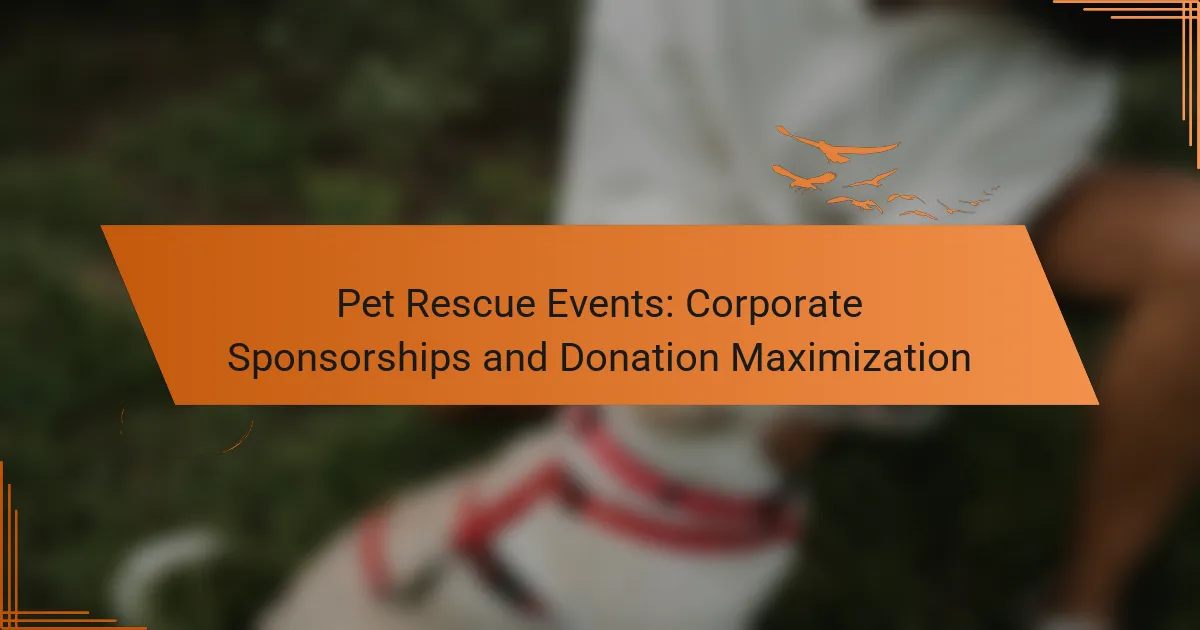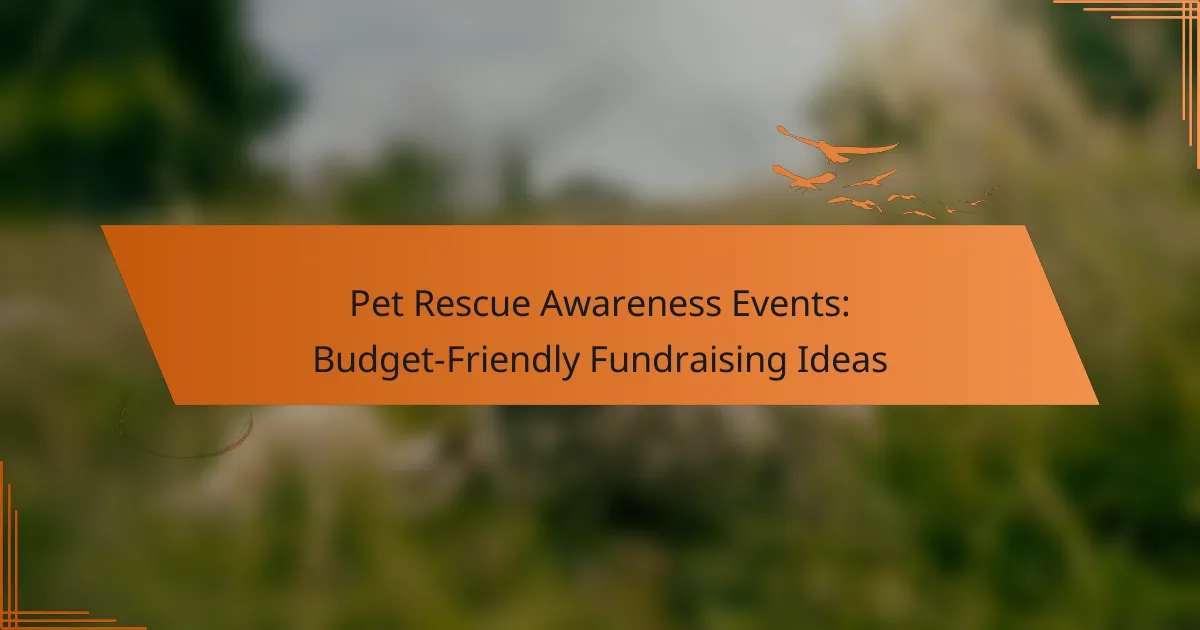Peer-to-peer fundraising is a powerful strategy for enhancing pet rescue events, enabling supporters to tap into their personal networks to raise both awareness and funds. By creating individual fundraising pages, participants can engage their communities while promoting the vital cause of pet rescue. Utilizing social media, crafting compelling fundraising pages, and offering incentives can further amplify outreach and encourage donations, making a significant impact on the success of these events.

How can peer-to-peer fundraising boost pet rescue events?
Peer-to-peer fundraising can significantly enhance pet rescue events by leveraging individual networks to raise awareness and funds. This approach empowers supporters to create their own fundraising pages, allowing them to connect with their communities while promoting the cause.
Increased donor engagement
Peer-to-peer fundraising fosters deeper connections between donors and the cause. When individuals fundraise on behalf of a pet rescue, they share personal stories and experiences, which can resonate more with potential donors than traditional appeals. This personal touch often leads to higher engagement levels.
To maximize donor engagement, encourage fundraisers to share updates and stories about the pets they are supporting. Regular communication can keep donors invested and more likely to contribute again in the future.
Broader reach through social networks
Utilizing social networks is a key advantage of peer-to-peer fundraising. Each fundraiser taps into their own social circles, expanding the reach of the pet rescue beyond its usual audience. This can introduce new potential donors who may not have been aware of the organization otherwise.
To effectively broaden your reach, provide fundraisers with shareable content such as images, videos, and pre-written posts. This makes it easier for them to promote their fundraising efforts across platforms like Facebook, Instagram, and Twitter.
Higher fundraising potential
Peer-to-peer fundraising often results in higher overall contributions compared to traditional methods. Fundraisers can motivate their networks to give, often leading to multiple small donations that add up significantly. This model can be particularly effective during events like marathons or community gatherings.
To enhance fundraising potential, consider setting tiered incentives for fundraisers based on the amount they raise. For example, offer small rewards for reaching certain milestones, which can motivate them to push for higher contributions.

What are effective strategies for peer-to-peer fundraising?
Effective strategies for peer-to-peer fundraising include leveraging social media, creating engaging fundraising pages, and offering incentives for donations. These approaches can significantly enhance outreach and motivate supporters to contribute to pet rescue efforts.
Utilizing social media platforms
Social media platforms are powerful tools for peer-to-peer fundraising, allowing individuals to share their campaigns with a broad audience. By posting updates, photos, and stories about the pets in need, fundraisers can create emotional connections that encourage donations.
Consider using platforms like Facebook, Instagram, and Twitter to reach different demographics. Engaging content, such as videos or live streams showcasing rescue events, can increase visibility and interaction, leading to higher donation rates.
Creating compelling fundraising pages
A compelling fundraising page is crucial for attracting donations. It should clearly communicate the mission, showcase the pets being rescued, and include a personal story that resonates with potential donors. High-quality images and videos can enhance emotional appeal.
Ensure the page is easy to navigate and includes a straightforward donation process. Providing suggested donation amounts, such as $10, $25, or $50, can help guide contributions and make it easier for donors to decide how much to give.
Incentivizing donations with rewards
Incentivizing donations with rewards can motivate supporters to give more. Consider offering tiered rewards based on donation levels, such as a thank-you note for small contributions or branded merchandise for larger donations. This approach can create a sense of appreciation and community among donors.
Be mindful of the costs associated with rewards to ensure they do not outweigh the funds raised. Simple incentives, like shout-outs on social media or exclusive updates about the rescue efforts, can be effective without significant expenses.
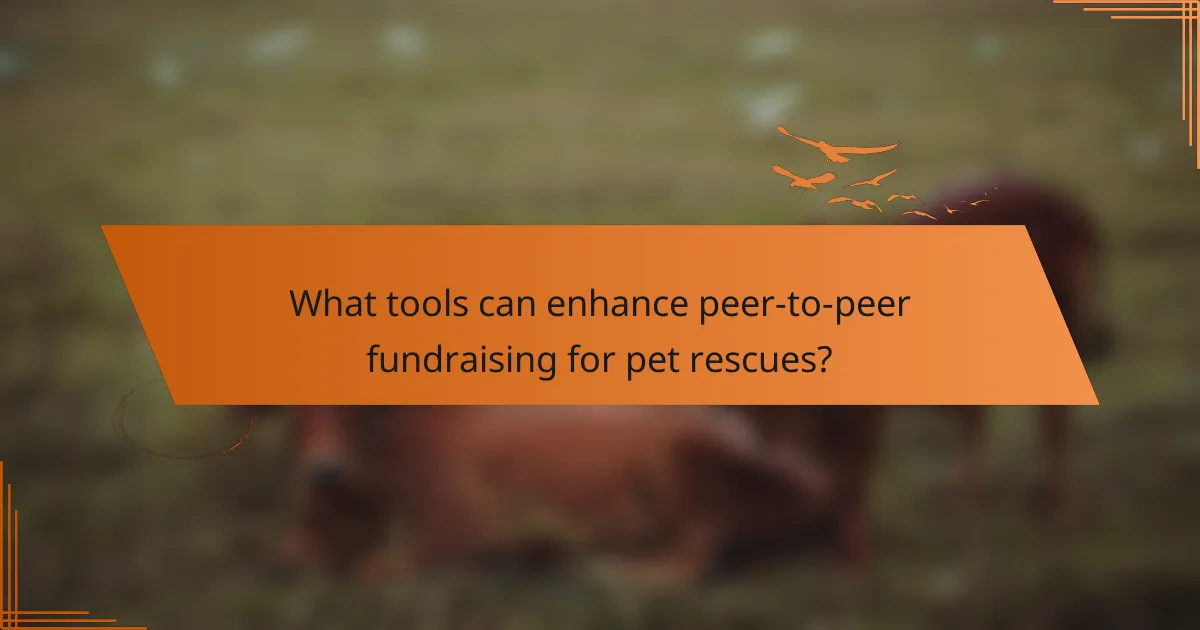
What tools can enhance peer-to-peer fundraising for pet rescues?
Several tools can significantly boost peer-to-peer fundraising efforts for pet rescues by providing platforms that facilitate donations and engagement. Choosing the right tool can streamline the fundraising process, enhance donor experience, and increase overall contributions.
GoFundMe for Animals
GoFundMe is a popular platform that allows individuals to create fundraising campaigns specifically for animal-related causes. Pet rescues can leverage this tool by encouraging supporters to set up their own campaigns, sharing personal stories about pets in need, and promoting the cause through social media.
To maximize success, campaigns should include compelling images and clear calls to action. Setting realistic fundraising goals and regularly updating donors about the campaign’s progress can also enhance engagement and encourage more contributions.
Classy for nonprofit fundraising
Classy is a comprehensive fundraising platform designed for nonprofits, including pet rescues. It offers features like customizable donation pages, event ticketing, and peer-to-peer fundraising options, making it easier for supporters to create their own fundraising pages.
When using Classy, it’s beneficial to integrate social sharing tools to help fundraisers promote their campaigns. Additionally, providing resources and tips for fundraisers can improve their effectiveness and increase the overall funds raised for the rescue.
Facebook Fundraisers
Facebook Fundraisers allow users to create fundraising campaigns directly on the platform, making it easy to reach a broad audience. Pet rescues can encourage their supporters to set up fundraisers for birthdays or special occasions, directing donations to the rescue’s cause.
To enhance the effectiveness of Facebook Fundraisers, organizations should regularly share updates and success stories on their page. Engaging with donors through comments and messages can also foster a sense of community and encourage repeat donations.
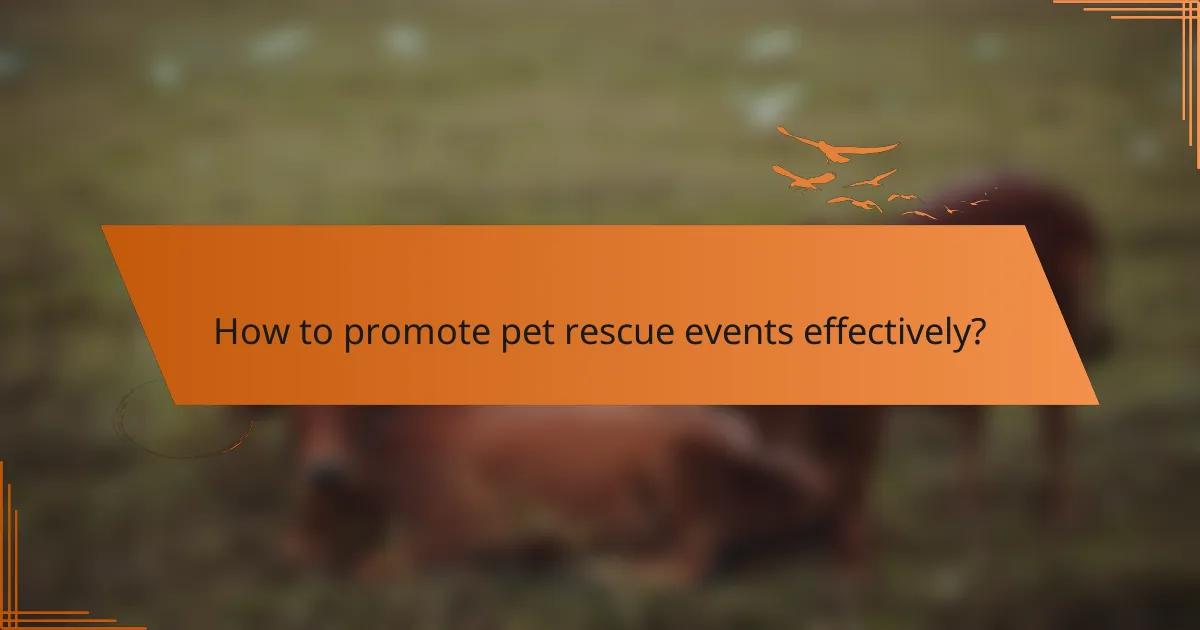
How to promote pet rescue events effectively?
Promoting pet rescue events effectively involves strategic outreach and engagement with the community. Utilizing local partnerships, email marketing, and media coverage can significantly enhance visibility and participation.
Leveraging local partnerships
Building partnerships with local businesses, veterinarians, and pet supply stores can amplify your event’s reach. These partners can help promote the event through their networks, providing mutual benefits such as increased foot traffic and community goodwill.
Consider offering sponsorship opportunities where local businesses can contribute financially or with in-kind donations in exchange for advertising at the event. This not only helps cover costs but also strengthens community ties.
Utilizing email marketing campaigns
Email marketing is a powerful tool for reaching potential attendees and donors. Create a targeted email list that includes past participants, volunteers, and supporters of your organization to keep them informed about the event.
Craft engaging emails that highlight the event’s purpose, share success stories, and include clear calls to action. Aim to send out a series of emails leading up to the event, with reminders and updates to maintain interest.
Engaging local media outlets
Local media can play a crucial role in promoting your pet rescue event. Reach out to newspapers, radio stations, and community blogs to share your event details and its impact on the community.
Prepare a press release that outlines the event’s significance, any special guests, and how the community can get involved. Offering interviews or photo opportunities can also entice media coverage, increasing visibility and attendance.
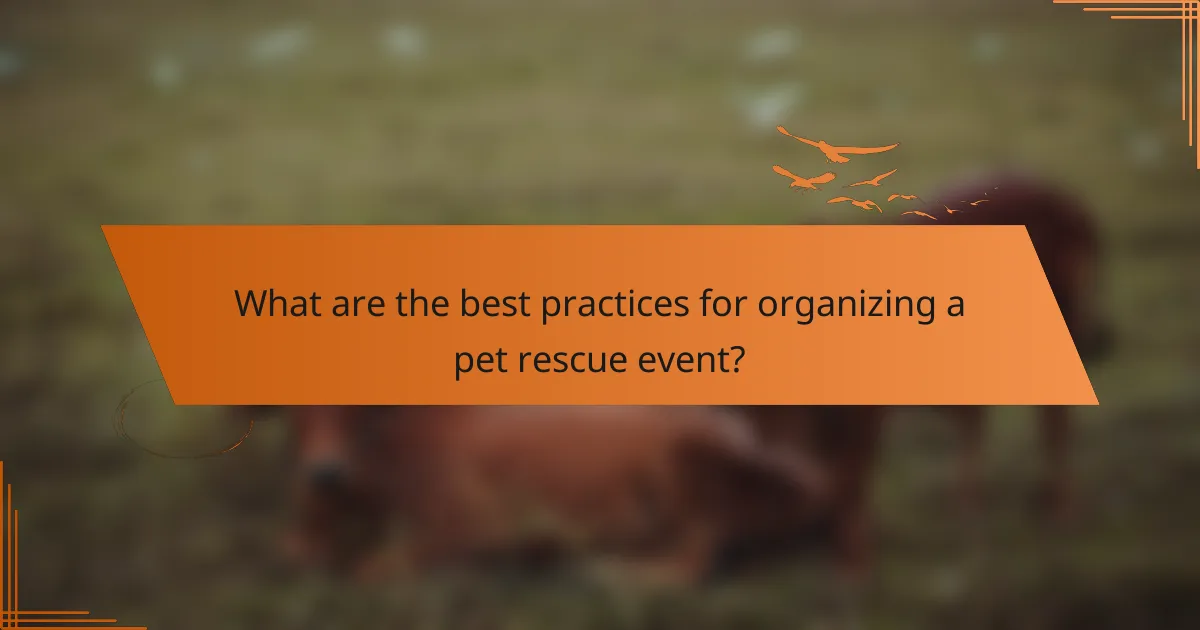
What are the best practices for organizing a pet rescue event?
Organizing a successful pet rescue event involves strategic planning, clear objectives, and effective execution. Key practices include setting achievable fundraising goals and selecting an appropriate venue to attract participants and donors.
Setting clear fundraising goals
Establishing clear fundraising goals is essential for guiding your event’s planning and execution. Goals should be specific, measurable, attainable, relevant, and time-bound (SMART). For instance, aim to raise between $5,000 and $10,000 to support local animal shelters.
Consider breaking down the total goal into smaller targets, such as individual contributions or sponsorships. This approach can motivate participants and provide a clear pathway to success. Regularly communicate progress to keep everyone engaged and focused.
Choosing a suitable venue
Selecting the right venue is crucial for maximizing attendance and creating a welcoming atmosphere. Look for locations that are accessible, spacious, and pet-friendly, such as community parks, local shelters, or event centers. Ensure the venue can accommodate the expected number of attendees comfortably.
Consider the amenities available at the venue, such as restrooms, parking, and shelter from inclement weather. Additionally, check for any local regulations regarding events involving animals to ensure compliance. A well-chosen venue can enhance the overall experience and encourage greater participation.


